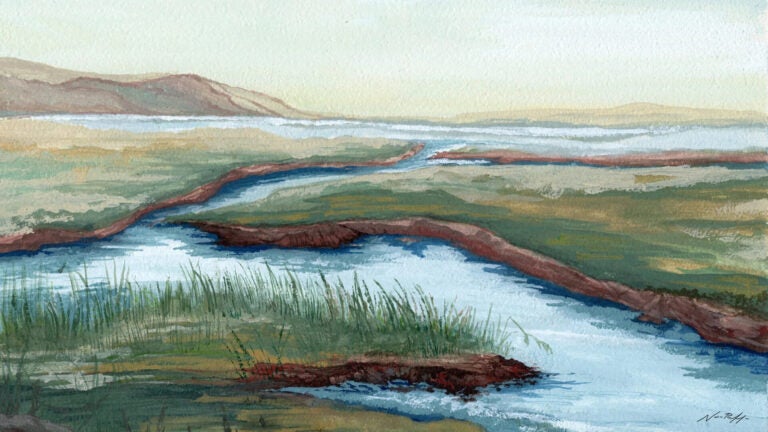
The wetlands of the Upper Newport Bay Ecological Reserve, which help sequester carbon dioxide and support numerous species of shorebirds, waterfowl, small mammals, and plants (Painting by Nina Raffio from a photo by David Bañuelas)
What is ‘blue carbon’? Inside USC research in Upper Newport Bay
Original story by Nina Raffio
Despite covering just 2% of the ocean, coastal wetlands — such as tidal salt marshes, mangrove forests and seagrass beds — are responsible for storing nearly half of all carbon found in ocean sediment. These “blue carbon” ecosystems naturally absorb vast amounts of carbon dioxide (CO2) from the atmosphere and bury it deep within their soil.
But rising sea levels threaten to disrupt the water’s chemistry and the delicate balance of microorganisms essential for carbon cycling. Rising tides could also transform marshes into mudflats, releasing stored carbon back into the atmosphere and exacerbating climate change.
With support from a Wrigley Institute Faculty Innovation Award, USC researchers are studying this threat through a two-part project in the tidal salt marshes of Upper Newport Bay Ecological Reserve, an estuary along Orange County’s 42-mile-long coastline in Southern California. Spanning over 600 acres of wetlands, this area supports populations of shorebirds, waterfowl, native plants and several rare and endangered species.
The research team, based in the lab of USC Dornsife Associate Professor of Biological Sciences Cameron Thrash, is examining how sea level rise may affect the marsh’s microbial communities, which ultimately influence carbon capture and storage. Using a combination of field observations, laboratory experiments and advanced modeling techniques, the team will gain a clearer picture of the marsh’s potential vulnerability to climate change.
“Salt marshes, like those at Upper Newport Bay, can actually store as much carbon as the Amazon rainforest or any other forest in the world, making them powerful allies in the fight against climate change,” said David Bañuelas, a USC Presidential Sustainability Solutions Fellow and the project’s lead researcher.